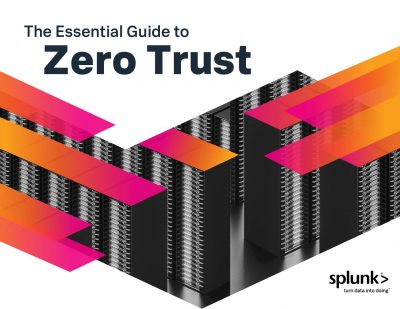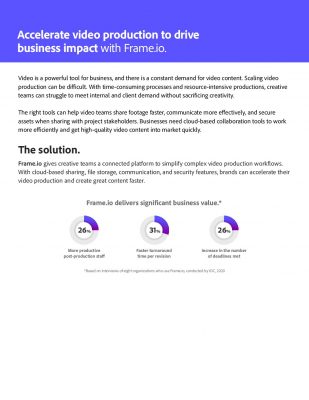Highlights:
- Implementing integrated marketing strategies for monetizing brand image is a structured process that demands introspection, collaboration, and the proper technological support.
- Apple’s product launch events are a masterclass in integrated marketing, blending digital prowess, immersive experiences, strategic PR, and captivating advertising.
As a C-level executive, you understand the critical importance of cohesive brand messaging. If your organization leverages multiple channels to promote your brand, an integrated marketing communication (IMC) strategy to build brand image is imperative. Without it, disparate departments may send conflicting messages to consumers.
For instance, your social media team might emphasize one product or service feature while the advertising team focuses on another.
This inconsistency can confuse customers, erode brand equity, and dilute the effectiveness of your marketing initiatives. An IMC strategy ensures all your marketing channels work together to reinforce your core message, driving more significant impact and clarity.
This article will outline the implementation of an effective IMC strategy tailored for executive oversight. We will also analyze successful IMC campaign examples to provide inspiration and underscore the strategic advantages of investing in integrated digital marketing.
How To Implement an Integrated Marketing Communication Strategy?
Businesses must adhere to a planned roadmap to reap the most significant benefits from this holistic approach. There are three elements in any integrated marketing communication strategy which are:
-
Analyzing the marketing strategies of the present
Before diving into changes, it’s vital to understand where your company currently stands. Begin by taking a thorough look at all your existing marketing campaigns and tactics:
- Evaluate effectiveness: Identify which strategies are hitting the mark and which aren’t. Monitor metrics like conversion rates, digital customer engagement, and brand recall to see what’s working.
- Check for consistency: Look for inconsistencies in your messaging or branding across different platforms. These discrepancies can confuse your audience and weaken your brand’s identity.
- Gather stakeholder feedback: Get input from key stakeholders, including your sales teams and customer service representatives, to gain insights into the real-world impact of your campaigns.
You can create a strong foundation for a successful integrated marketing communication strategy to harness brand reputation by thoroughly assessing your current marketing efforts.
-
Departmental cooperation in planning
An integrated marketing communication strategy begins with teamwork. It’s not something one department can handle alone. Here’s how to ensure everyone is working together seamlessly:
- Foster collaboration: Host workshops and brainstorming sessions with marketing, sales, customer service, and product development teams. Each department brings valuable insights that contribute to a comprehensive strategy.
- Clarify goals: Document key messages, objectives, and desired outcomes. This ensures everyone is aligned and moving in the same direction.
- Maintain regular communication: Schedule frequent inter-departmental meetings to align efforts and promptly address challenges.
By uniting your teams and fostering collaboration, you can develop a cohesive IMC strategy that delivers a consistent and engaging customer experience.
-
Leveraging technology for seamless integration
To truly integrate your marketing efforts, businesses need to leverage advanced tools and platforms:
- Centralize marketing efforts: Identify software or platforms that centralize your marketing activities, such as Customer Relationship Management (CRM) tools or marketing automation platforms.
- Promote accessibility: Ensure these tools are accessible and understandable for all relevant departments. This may require conducting training sessions or workshops.
- Refine regularly: Regularly update and refine your technology stack based on evolving business needs and team feedback using these tools.
Implementing integrated marketing strategies for monetizing brand image is a structured process that demands introspection, collaboration, and the proper technological support. By following these steps, businesses can ensure they deliver a consistent and impactful brand narrative to their audiences.
Understanding the theory behind creating a cohesive and unified marketing approach is crucial, but real-world examples provide invaluable insights into how these strategies are effectively executed.
What Are Some Integrated Marketing Communications Examples?
Let’s now delve into integrated marketing communications (IMC) examples, showcasing successful marketing campaigns demonstrating the power of a well-orchestrated marketing effort.
These examples illustrate how different communication channels can harmonize harmoniously to deliver a consistent and impactful message:
- Apple’s integrated marketing brilliance at product launch events: Apple’s product launch events are a masterclass in integrated marketing, blending digital prowess, immersive experiences, strategic PR, and captivating advertising.
From tantalizing teaser campaigns to exclusive media invites and compelling social media buzz, every element harmonizes to create anticipation and deliver a unified brand narrative. This meticulous orchestration builds excitement and reinforces Apple’s unparalleled reputation for innovation and cutting-edge technology.
- Red Bull’s integrated marketing mastery in action: Red Bull exemplifies elements of an integrated marketing communications strategy to optimize brand presence by leveraging diverse platforms to deliver compelling and shareable content.
From music festivals and its media platform (Red Bull Media House) to extreme sports sponsorships and branded films, Red Bull seamlessly combines marketing efforts to resonate with its target audience of daring and thrill-seeking individuals.
- Dove’s Inspiring IMC Campaign for Body Acceptance: Dove’s groundbreaking campaign challenges beauty norms and champions body acceptance, providing prime integrated marketing communication strategy examples of monetizing brand image. Dove consistently delivers an empowering message to audiences worldwide through a strategic fusion of social media engagement, compelling content, impactful public relations, and powerful advertising.
From thought-provoking advertisements to engaging social media initiatives, influencer collaborations, and user-generated content, Dove’s approach sparks meaningful conversations and drives positive change.
It’s essential to understand the underlying reasons for investing in integrated marketing.
Why Invest in Integrated Marketing?
The need for cohesive and consistent communication across all marketing channels has never been more critical. Let us have a closer look at what integrated marketing offers:
- The transition from a fragmented to a collaborative marketing structure by dismantling silos.
- Forge a unified strategy with one motto, dream, and vision.
- Time and cost savings.
- Ensure your brand message resonates across all marketing channels, enhancing consumer trust and authority leading to increased brand recall.
- Gain deeper insights into your customers, enabling better understanding and engagement.
- Foster long-term relationships with your audience by connecting authentically.
- Deliver a seamless and consistent customer experience through integrated marketing efforts.
- Enhance relevancy and personalization in marketing communications.
- Achieve higher conversion rates with integrated and cohesive marketing strategies.
Final Thoughts
If your organization leverages multiple channels to promote your brand, an integrated marketing communication (IMC) strategy is imperative. Without it, disparate departments may send conflicting messages to consumers, causing confusion and weakening your brand’s identity.
Brand strategy and integrated marketing communication ensure all your marketing channels work together harmoniously, reinforcing your core message and maximizing the impact of your marketing efforts. By embracing a planned roadmap, fostering collaboration, and leveraging technology, businesses can deliver a consistent and engaging brand narrative, driving stronger consumer trust and higher conversion rates.










































































